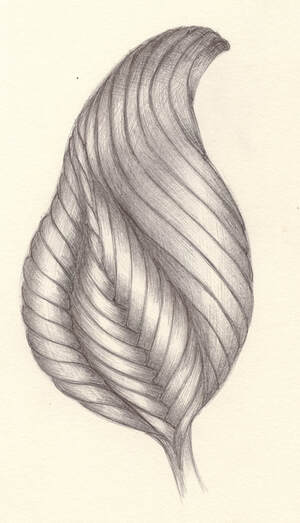Well, you may ask, what is the alternative? Do we need to dismiss all matter of discernment? If we are not to approach art with a critical eye, forming opinions about what we like and what we don't like, how are we to look at art? Must we abandon all distinction between one thing and another? No. The contemplative eye is not undiscerning. But the approach is different, as the end is not to judge but to value. If one is presented with a gift one does not say, "I like this, but I don't like that." One simply says thank you, and accepts the gift on the face of it. Appreciation is rooted in whatever can be found of value, without complaint. And art, like life, is a gift. As every tree you see is a gift, a visual blessing whatever its shape, so is a work of art. I taught college level art for 26 years, and never once found a drawing or painting in which I found no value. Does that mean that all art is "good?" Did I give all As, as I've heard some art teachers might? Of course not. Some art is more successful than other art. ...But all art has value on its own terms.
Last night I was reading in an old (1998) book on art called Portraits: Talking with Artists at The Met, The Modern, The Louvre, and Elsewhere, by Michael Kimmelman. In it, artists, one by one, are interviewed by Kimmelman about the art they see together as they walk through galleries. Last night I read the chapter on Brice Marden, and it was a joy to follow along as the two conversed. Marden was full of insights into different pieces, discerning, yet appreciative. He criticized nothing, but enthused often about the varying aspects he discovered in a great variety of art. It was a very different experience for me, taking that all in, from scrolling through Facebook.



 RSS Feed
RSS Feed
